-
Posts
349 -
Joined
-
Last visited
Content Type
Profiles
Forums
Gallery
Events
Posts posted by afesan
-
-
Congrats, Ron !. Well done !
-
Glad you like it, Luis !...
We´ll see soon...sure.
Clear skies !
Antonio
-
Many thanks, Thomas !
-
Hi Antonio
Great image!
Beautiful colors and nice details
Thomas
-
Well... the "special" cleaning soap is a simply liquid dishwasher soap. In Spain is well-known as "Mistol" and very popular in any supermarket. Many of us clean here our mirrors with this one and distilled water. Just clean carefully your hands with this soap...and wet the mirror with a lo of water.Let the mirror wet for some minutes in order to "loose" the dirty. Then add some drops of liquid soap to the water and clean softly with the yolk fingers and circular movements ..veryyy softly from the center to the borders. Repeat this operation 2-3 times...FInally clear with al lot of distilled water.Let dry the mirror into vertical position .. This liquid soap leaves no residue of any class and don´t damage the mirrors..
http://www.mistol.es/es/inicio.cky.html
Collimation was simply done with a first approximation using a laser collimator from ASA ( BTW: I did not see this laser into ASA products lately)..Then my observatory mate and me did several coliimation approaches with the Telecat and Infinty tools from Catseye
http://www.catseyecollimation.com/
until we were very close to what we consider "perfection". Finally with real stars we made marginal minor adjusting ..
Hopes this helps
Antonio
-
vdB 136..an orange-yellow reflection nebula..After a year ..I finally decided to clean the mirrors of the ASA N12 astrograph. Having a remote observatory is a great chance for astrophotography, but the wild forest environment..., dust, insects and pollen... are sure dirty deposits for any telescope mirror.Time to clean with distilled water and an special cleaning liquid soap... . Here is my mate observatory who helped me:After that, the telescope need a recollimation and this is the first image and test.... I hope you like it:More resolution,target general information and acquisition details:Thanks for looking.Enjoy summer
-
-
Hundreds of thousand stars..and a darkness "oasis" ..A LDN 810 is a dark nebula that was first cataloged by B.T. Lynds in 1962. The dark region at the center contains gas and dust out of which new stars are forming. A bipolar outflow of gas from one of these stars has also been detected.LDN 810 is a dark nebula in Vulpecula border with Cygnus,which is in the upper left ofthe image. Note the obscuring dust cloud continues south of image.. In the center of LDN 810 is the reflection nebula GN 19.43.3.01. LDN 810 is seen in IR light to be the birth ground of stars hidden by dust in visible light. Several authors estimate the distance between 6000 to 8000 lightyears.SH2-92 provides the faint red background,very weak.Young Stellar Objects (YSOs) are stars in the first phase of theirs lives, before they enter the main sequence of the Hertzsprung-Russell diagram and are fed by stably hydrogen fusion. YSOs are formed by contraction (and fragmentation) of molecular clouds.Information Credits: NOAO, Antonio F.SánchezMore info& resolution: http://afesan.es/Deepspace/slides/LDN%20810%2CSH2-92%2CReflection%20nebula%20GN%2019.43.3.01%2C%20YSO%20CB205YC1%20%28Vulpecula-Cygnus%29.html
-
A classical ..Very nice , Ron !!!
-
Wonderful target.... Nice !
-
You are very kind, Luis
-
Glad you like it !
-
Thanks, Ron !
-
A 2900x2315 image can be seen here: http://afesan.es/Deepspace/NGC%205934,5935,5943,5945,5947%20(Bootes)_jpg_orig.htmlNGC 5945, along with the other galaxies in the image, are located in the constellation Boötes. NGC 5945 is an example of a barred galaxy,.spiral whose arms overlap making a pseudo ring. Besides these rings there are two outer arm segments that see to make huge "ears" on the east and west sides of the galaxy. The two arms appear to have a high concentration of hot young blue stars. Just above the rings is a blue area, of possibly similar stars, that appear to have become slightly disconnected from the galaxy.To the far left, of NGC 5945, is a pair of interacting galaxies,NGC 5934 and 5935.Both have plumes drawn out of them by the interaction. Below the pair is KISSR 1955 a starburst galaxy with a faint outer halo. Starburst activity can be triggered by interaction with another galaxy but thisisn't necessary.At the center of the image is the NGC 5943.This galaxy is very fuzzy with large plumes Closer examination reveals a jet coming from the right side of the galaxy. This jet may be related to the large, and faint, cloud that extends to the upper left and lower tight of NGC 5943.NGC 5947 is a rather pretty face on barred spiral with many arm segments.All are likely members of the same local groupabout a quarter billion light-years distant by redshift measurement.Hundreds of tiny galaxies and galaxy groups are here and there ,in the background,all around the image., some of them 3500 light years and even more...Text Credits: Bob Franke, Rick Johnson,Antonio F.Sánchez
-
Thanks, Mark !..sorry for this late post ...
-
ASA N12, DDM85, FLI ML8300 * L:582m R: 180m G:170m B:190m * Unguided all subframes * Taken automatically with Sequence (Beta) version, Autoslew (Beta) and MaximDL
A 2678x2000 picture can be seen here: http://afesan.es/Deepspace/NGC%204151%20(Eye%20of%20Sauron),NGC%204156%20(Canes%20Venatici)_jpg_orig.html
NGC 4151 is an intermediate spiral Seyfert galaxy located 43 million light-years from Earth, in theonstellation Canes Venatici. The galaxy was first mentioned by William Herschel on March 17, 1787; it wasone of the two Seyfert galaxies described in the paper which defined the term. It is one of the nearestgalaxies to Earth to contain an actively growing supermassive black hole; it was speculated that the nucleusmay host a binary black hole, with about 40 million and about 10 million solar masses respectively, orbitingwith a 15.8-year period. This is, however, still a matter of active debate.Some astronomers nickname it the "Eye of Sauron" from its appearance.X-ray sourceAstronomers using data from the European Space Agency’s XMM-Newton satellite have found a long-sought X-raysignal from NGC 4151. When the black hole’s X-ray source flares, its accretion disk reflects the emissionabout half an hour later.A litte tidal tail can be seen into the bottom of the galaxy...and also in the spiral galaxy NGC 4156..Credits NASA & Wikipedia -
Very nice Ron!.
Congrats !
-
WOW!!!
Incredible Mark !!!
-
 Many thanks !
Many thanks ! -
Thanks Luke¡¡.

-
 Thanks Mark !!...
Thanks Mark !!... -
This is NGC 3344.Imaging along past January-February months. All subframes unguided with DDM85, ASA N12 and Sequence software in robotic-automatic mode.
111x6 minutes L filter
30x6m R filter
30x6m G filter
34x6m B filter..
More resolution (2500x1868) and details at: http://afesan.es/Deepspace/slides/NGC%203344%20%28Leo%20Minor%29.html
Kind Regards,
Antonio
-
Very nice, Ron ¡
-
I use Sequence here as a basis for my remote-robotic system since some months ago. It works perfectly as a standalone system ( Sequence+Autoslew+maximDL).
That´s all I need .
 .
.I can image all night long without noticeable problems.It´s working for me. Of course it could be improved with some other tips... but I guess ASA & Mr. Keller take note of users wish list for a next version ( or I hope so...)
 . My imaging skill has been improved 100% .
. My imaging skill has been improved 100% .I have also installed the Secure System "TALON6" in order to avoid any problems and have complete safety for my remote observatory ( weather events, electricity fails, lost of PC communication,hangs of Windows,timeout, lost of internet connection..etc....,etc ,etc. It try to park the mount) and ALWAYS and close roll-roof systems or even any Dome system ( as it works perfectly with Sequence (ASCOM compliant) . It´s a total universal "panic" system .

With Sequence and TALOn6 , I go to bed an can sleep with TOTAL tranquility.I have installed it here since past summer.
For interested guys (English) here is the link: . BTW: I don´t have ANY commercial interest . I am only a user ¡..
http://observatoriosspag.es/index.php/en/component/content/article/84-o-a-r-spag/361-talon6-2.html
and this: http://observatoriosspag.es/images/R.O.R%20Talon6/IP_Switch_user_manual.pdf
Just my two cents

CS
Antonio



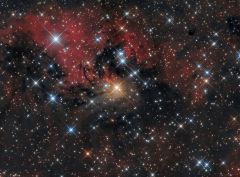
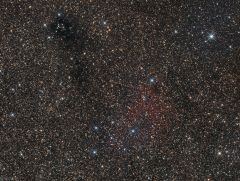
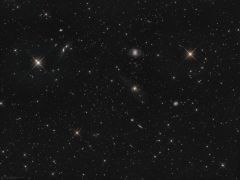
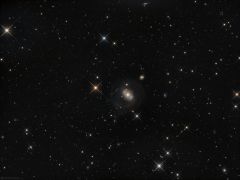
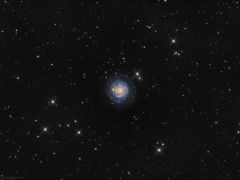
IC5068
in Deepsky
Posted
Lovely colour !.